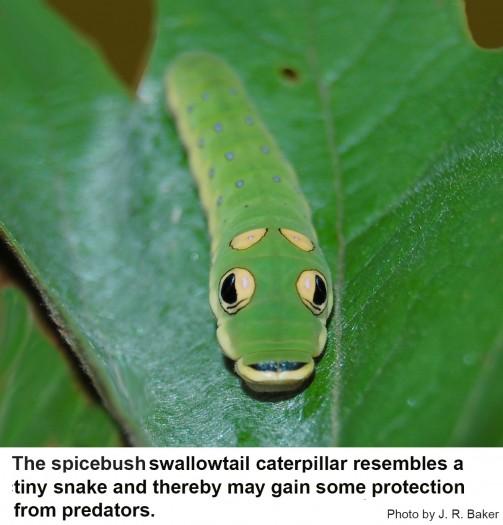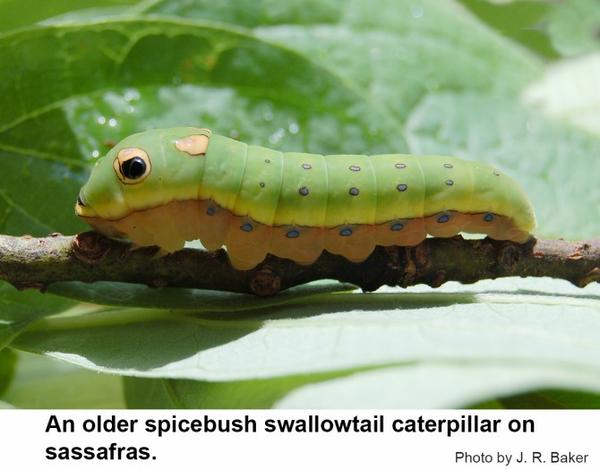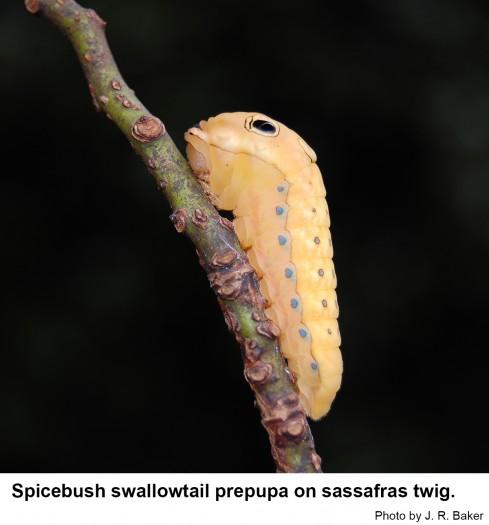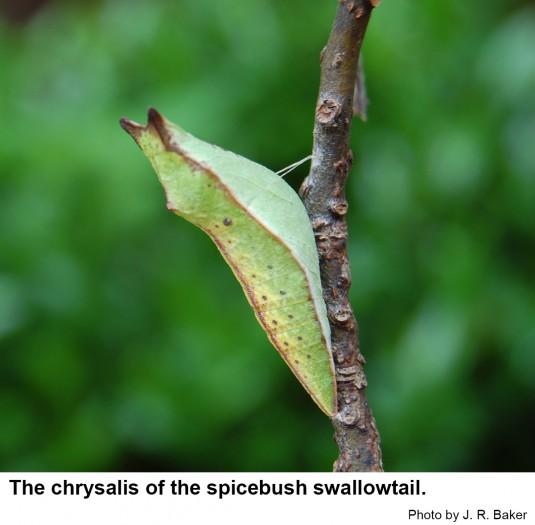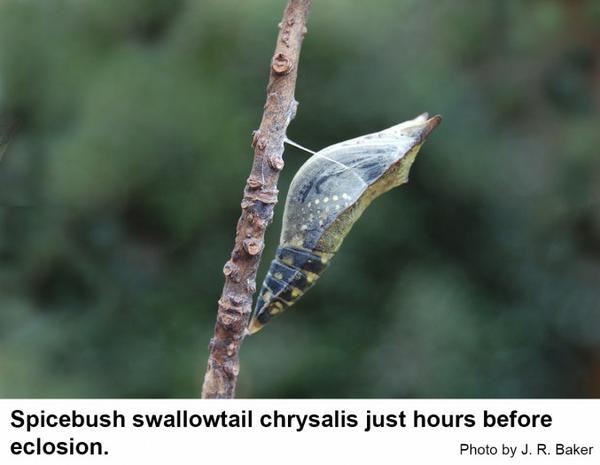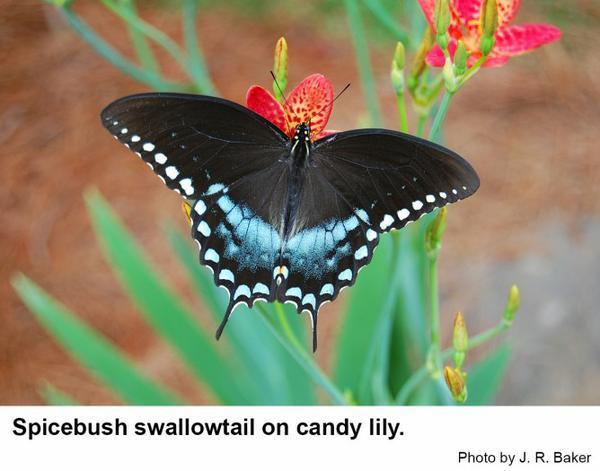Description and Biology
Spicebush swallowtails, Papilio troilus, are butterflies that have a conspicuous tail on each hind wing. The forewings and body are black. The forewings have a row of white spots near the outer margin and another small row on the margin. The hind wings are black with two orange spots, a row of spots that fade from white to pale blue and a conspicuous pale blue area. Females lay eggs singly on the underside of host leaves. The worms generally fold leaves together to form a shelter in which they live on a silk lining. Young caterpillars mimic bird dropping. Older caterpillars are green with lovely blue spots. They also have ferocious eyespots, probably to deter predators. These worms usually feed on sweet bay, spicebush, and sassafras. The prepupae assume an comma shape. The chrysalis has two anterior horns and is suspended from a twig by a narrow silk band. The chrysalides may be brown or green, but overwintering chrysalides are always brown. Several generations occur each year.
Host Plants
Although they have two pairs of ferocious eyespots, spicebush swallowtail caterpillars are harmless. The worms usually feed on sweet bay, spicebush, and sassafras as well as tulip tree. They typically fold leaf margins over to form a silk-lined shelter in which they retreat when they are not feeding. Their leaf-folding and leaf-feeding are usually minor enough to escape notice.
Residential Recommendation
Although spicebush butterflies are not rare, the caterpillars are seldom noticed. It would seem un-American to spray or dust such a wonderful insect.
References
- Spicebush Swallowtail. Butterflies at Home.
- Common name: spicebush swallowtail, scientific name: Papilio troilus Linnaeus (Insecta: Lepidoptera: Papilionidae). Hall, D. W. and J. F. Butler. 2000. Featured Creatures, Entomol.& Nematol. FDACS/DPI, Univ. Florida.
- NC State Extension Plant Pathology Publications
- NC State Horticultural Science Publications
For assistance with a specific problem, contact your local N.C. Cooperative Extension center.
This factsheet has not been peer reviewed.
Publication date: July 11, 2013
Reviewed/Revised: May 9, 2023
N.C. Cooperative Extension prohibits discrimination and harassment regardless of age, color, disability, family and marital status, gender identity, national origin, political beliefs, race, religion, sex (including pregnancy), sexual orientation and veteran status.

